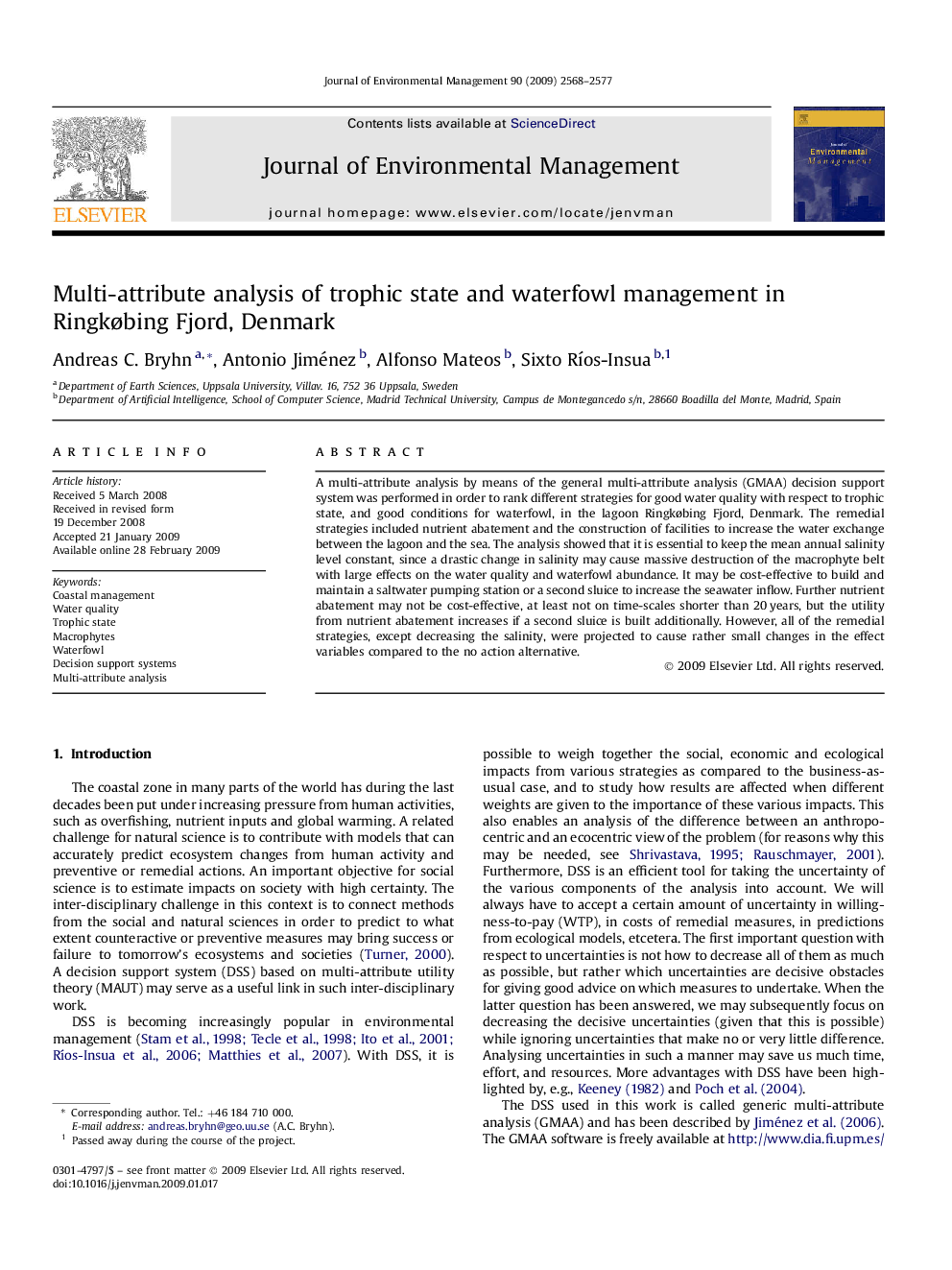| Article ID | Journal | Published Year | Pages | File Type |
|---|---|---|---|---|
| 1057753 | Journal of Environmental Management | 2009 | 10 Pages |
Abstract
A multi-attribute analysis by means of the general multi-attribute analysis (GMAA) decision support system was performed in order to rank different strategies for good water quality with respect to trophic state, and good conditions for waterfowl, in the lagoon Ringkøbing Fjord, Denmark. The remedial strategies included nutrient abatement and the construction of facilities to increase the water exchange between the lagoon and the sea. The analysis showed that it is essential to keep the mean annual salinity level constant, since a drastic change in salinity may cause massive destruction of the macrophyte belt with large effects on the water quality and waterfowl abundance. It may be cost-effective to build and maintain a saltwater pumping station or a second sluice to increase the seawater inflow. Further nutrient abatement may not be cost-effective, at least not on time-scales shorter than 20 years, but the utility from nutrient abatement increases if a second sluice is built additionally. However, all of the remedial strategies, except decreasing the salinity, were projected to cause rather small changes in the effect variables compared to the no action alternative.
Keywords
Related Topics
Physical Sciences and Engineering
Energy
Renewable Energy, Sustainability and the Environment
Authors
Andreas C. Bryhn, Antonio Jiménez, Alfonso Mateos, Sixto RÃos-Insua,
